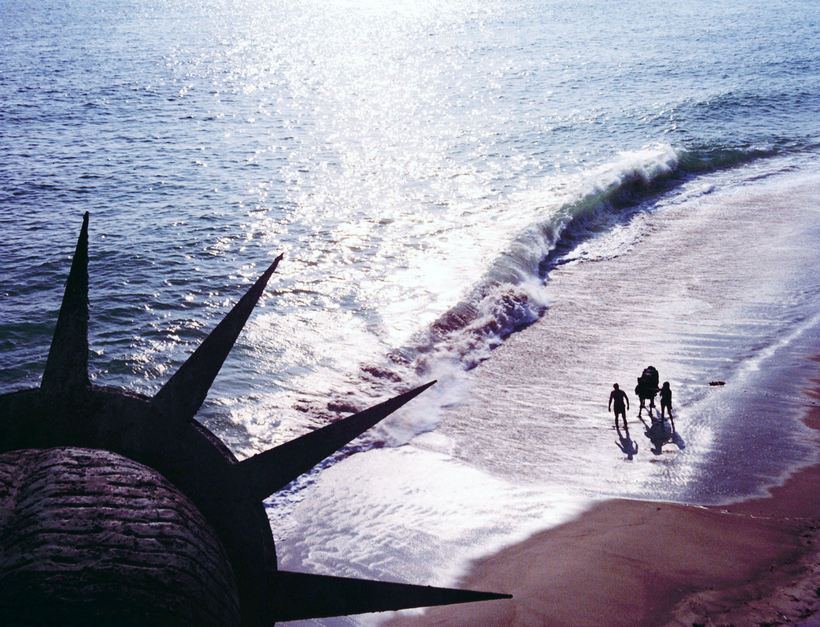Dan Carlin, host of the popular podcast Hardcore History, stresses at the outset of his latest book that he is not a historian but rather “a student of history”: an amateur status that grants him the freedom “to roam intellectual spaces” that are off-limits to academics cowed by the rigors of peer review. He uses this freedom to pursue big, slippery, speculative questions about the nature of humanity—questions that he admits are prone to bias and impossible to quantify. A different student of history might wonder if restricting himself to a smaller field of inquiry could yield more graspable and thus more profound answers, but not Carlin, who roams from ancient Assyria to nuclear-powered America with the wowed air of a college freshman who’s just discovered cultural relativism.
This wide-eyed approach to history clearly has a big audience, and Carlin’s style—enthusiastic, sweeping, spiced with gory detail, and pausing frequently to entertain broad hypotheticals and counterfactuals—works engagingly for an audio format. (His background is as a radio journalist.) It’s less successful in a book, where a reader has time to pause over a line like “Some societies and cultures of the past held wildly differing ideas of what should and shouldn’t be okay sexually between adults and children” and wonder where exactly the argument is leading. The questions that drive the first two chapters (“Do tough times make people tougher?” and “What impact does widespread childhood trauma have on a society?”) are so broad that it’s doubtful they can be posed, let alone answered, in any meaningful way.
Carlin roams from ancient Assyria to nuclear-powered America with the wowed air of a college freshman.
The childhood-trauma chapter is a particularly egregious example of the murky ends to which relativistic, context-free questions can lead. It leans heavily on the theories of Lloyd deMause, the largely self-funded, self-publishing promoter of a discipline called “psychohistory,” which asserts that societies can be psychoanalyzed like people, and that the trauma of children affects the mood, morals, and even foreign policy of those societies. How exactly this works is left rather fuzzy; what is offered instead is a lot of detail about child abuse—Carlin reproduces from deMause a gruesome list of devices used in the past to discipline and punish children. Even though he admits in a footnote that psychohistory “has garnered scant interest from higher academic institutions” and been called a “pseudoscience,” Carlin’s elevation of it is troubling.
Being a good student of history requires some measure of skepticism about one’s sources—who is telling a particular story, and why, and what voices are being excluded. It’s worth noting that Carlin cites just three female historians in the text, and in a bibliography of more than 150 works, I counted fewer than 10 books solely authored by women. This is not merely a question of bias or balance. When a book sets out to pose large questions about the nature of “humanity,” it is a serious flaw not to acknowledge the fact that getting counted as “human” is not automatic but a function of power within a society.
Dates with Destiny
The book is stronger once Carlin warms to his central thesis, about the causes and consequences of extreme, civilization-threatening crisis. These chapters range widely—the Romans, the Black Death, the atomic bomb—in order to question whether our assumptions about historical progress are simply hubris. Returning repeatedly to the famous final scene of Planet of the Apes, in which (spoiler!) Charlton Heston stumbles upon the head of the Statue of Liberty buried in the sand, Carlin digs deep into its implicit question: How could this happen?
He settles comfortably into the role of amateur historical detective with an engaging account of the end of the Bronze Age, sometime between 1250 and 1100 B.C.E., working through the most popular theories, which include invasion, famine, drought, plague, earthquakes, war, and various combinations of the above. The downfall of Assyria and the Roman Empire are explored in a similar way, as distant and somewhat abstract problems for an outsider to solve, their human cost driven home by graphic accounts of barbarian onslaughts and burning cities. At this historical distance, the clues are fragmentary: archaeological and bodily remains, scant written evidence, and the partisan interpretations of later chroniclers. Even once he arrives at well-trodden 20th-century history, Carlin tries to remain pointedly neutral, asking questions but not advancing any particular theory or hewing to any party line.
If there is a lesson in The End Is Always Near, it is that progress can go backwards, civilizations can fall, and that annihilation is always just a few human missteps away. It’s a warning for “humanity,” however, rather than for politically engaged citizens of complex societies. The book ends with a shrug, suggesting that how we respond to the possibility of apocalypse is a toss-up of optimism versus pessimism. But at a moment when children all over the world are walking out of school and begging their adult leaders to do something about the looming catastrophe of climate change (which may have hastened the end of the Bronze Age), perhaps the lessons of historical disasters should spur us to action, not just contemplation.
Joanna Scutts is the author of The Extra Woman: How Marjorie Hillis Led a Generation of Women to Live Alone and Like It


